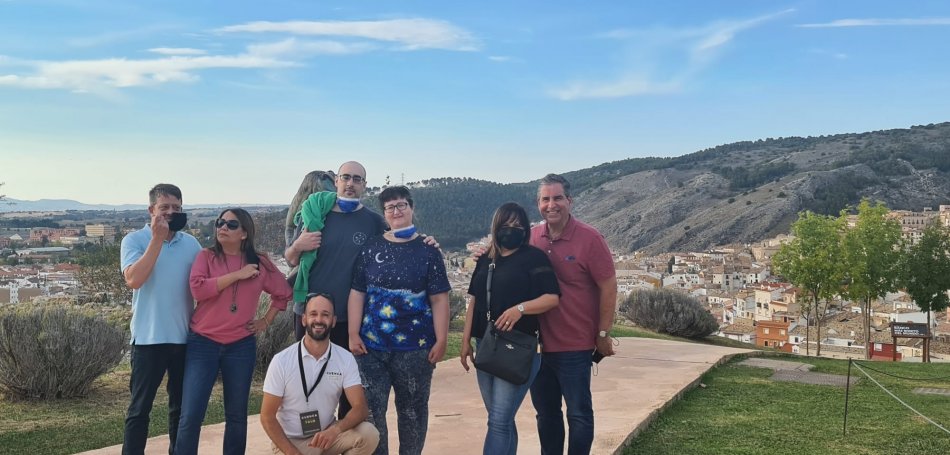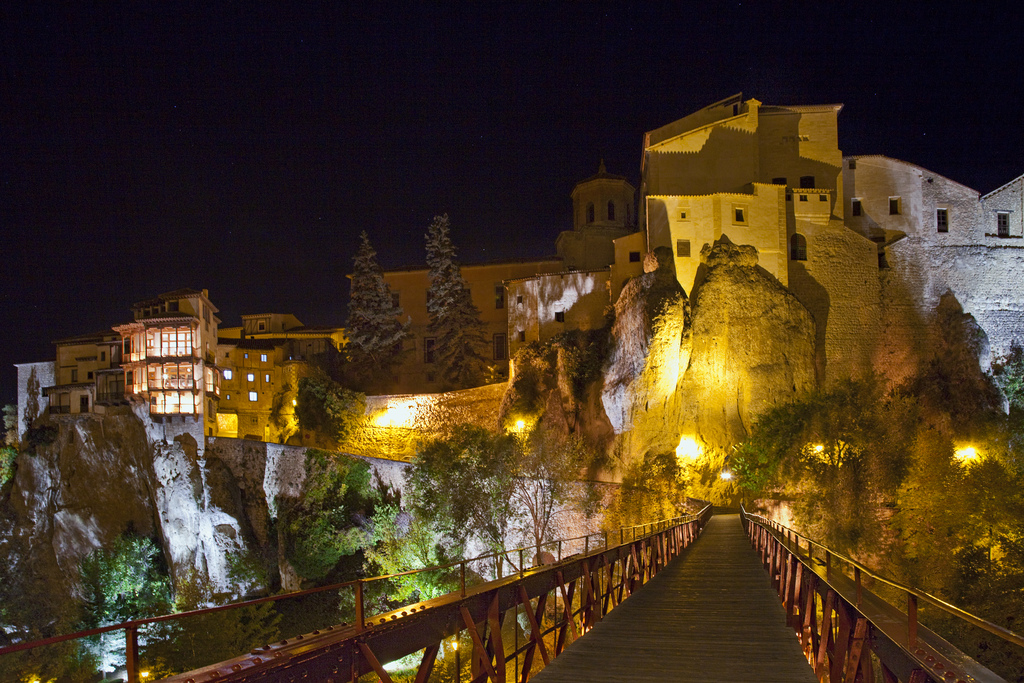
- publicado 30.10.2021
- por Cuenqueando
- Cuencavisitas guiadasUNESCOCuencaGuided visitUNESCO
Cuenca, an essential visit to this World Heritage city
Cuenca is a city that lives hanging on itself, challenging its own vertigo and heights and whose inhabitants always look down in order to feel small among a landscape that is the setting for countless legends and poems. The guided tour of Cuenca immerses you fully in that high city, on rocks and perched on the stone as if it were a burning nail.
%20(Medium).jpg)
Only the arrival at the Castle, the starting point of the guided tour with the best views of Cuenca, already gives a good account of the inferiority of human beings with respect to the nature that surrounds them. Following the Hoz del Huecar, an authentic monument made by water and air after thousands of years, we witness the beauty of a practically unaltered landscape, with endogenous riverside vegetation that changes its outfit with the seasons and vertical stone walls that flank to the road. The arrival at the Castle, where the parking is located and the visit begins, is the highest place in the city. You can see the ancient remains of the fortification that protected the city of Cuenca on its weakest flank and cross the famous Bezudo Arch, the only way to leave and enter the city through that area. But above all, the spectacular views of the two Hoces that surround and defend the city of Cuenca, Júcar and Huécar, stand out in loyal millennia-long company. That of Júcar, all mountain landscape, with the river in the background and the Ojos de la Mora that always watch over and guard it; that of Húecar, monumental and vertiginous, with the Parador de Turismo like an island on earth and its umbilical cord with the city, the San Pablo Bridge that gives access to our illustrious Hanging Houses, the last stop of the visit.
We continue discovering Cuenca on our visit and the first thing we find is the old barracks of the Inquisition, which now functions for much less condemnatory purposes and which houses the Provincial Archive. On its esplanade, tourists are greeted by a poet of golden letters who lived in that famous century that everyone heard about, Fray Luis de León, from Cuenca and of Converso descent who participated in the creation of the Gregorian calendar.
We continue along Julio Romero de Torres street, better known by locals as Ronda del Húecar, and without a doubt the most beautiful and medieval street in Cuenca. The protagonist is stone, both natural and constructed, with buildings such as the Carmelitas Convent (current headquarters of the Antonio Pérez Foundation that houses works of contemporary art) or the Church of San Pedro, with an orthogonal plan and which stars with its dimensions the narrowness of the Cuenca street. Further down, between viewpoints and vertical facades that precede our skyscrapers, we enter the Passage of Christ, an authentic example of the urban use that was made in such a narrow buildable margin and that keeps one of those legends sprinkled with love, war, honor and honour. , which always end up having swords involved.
The Posada de San José, with an elegant façade, was founded by the Chantre of the Cathedral for the boys of the choir, but it also belonged to Juan Bautista del Mazo, a little-known painter but married to the daughter of Diego de Velázquez, who was know a little more. His house, as not in a city like Cuenca, is full of legends, among which they say that one of the doors served as inspiration for the famous Las Meninas. Probably not, but it's nice to think that perhaps Velázquez would have painted his famous Meninas there.
_1.jpg)
And now we come to the protagonist of the Old Town, what would be the first Gothic Cathedral built in Castile, the Cathedral of Santa Maria. Its cover should be noted that it is not the original due to the collapse of a tower that affected the structure, but it undoubtedly dresses the entire square in the best ways, creating balance to the whole. The best of the Cathedral is its interior, its chapels that cover all artistic styles from the 13th to the 20th century and its light, projected through contemporary works of art that generate the Big Ban in a symbolic message. Architecture, sculpture, cabinetmaking, painting and Big Bang, an authentic Temple of Science. The Cathedral of Cuenca is one of the great jewels of this World Heritage city. And don't forget to go up to its triforium and discover another point of view (in this post we tell you everything about the Triforium of the Cathedral of Cuenca).
The end of the visit is approaching but that doesn't mean the worst is left, we continue with our guided tour showing you what to see in Cuenca when you visit us, because the walk to the Hanging Houses will take us through the Episcopal Palace and access to the Art Museum Abstract, true cultural engine of the 20th century Cuenca and thanks to which our illustrious homes are preserved.
To see the Hanging Houses well you have to challenge vertigo, but above all do it without fear because the San Pablo Bridge, in addition to being safe, is an authentic masterpiece of the new architecture developed in the 19th century, and built by the Eiffel School. Closing the circle that accompanies us through Cuenca, we see at a glance how contemporary art unites stone with stone and art with art as if it were a thread. Natural and human monuments that make this city a perfect symbiosis and an example of how to coexist with the natural environment.

Cuenca is everything, and that word implies a lot. Nature, rivers, forests, walks, poplars and pines; but also history, art, heritage, tourism and science. All of this has become a World Heritage Site and one of the most photogenic cities that exist, don't miss the most impressive pictures of Cuenca!
 ES
ES EN
EN PT
PT